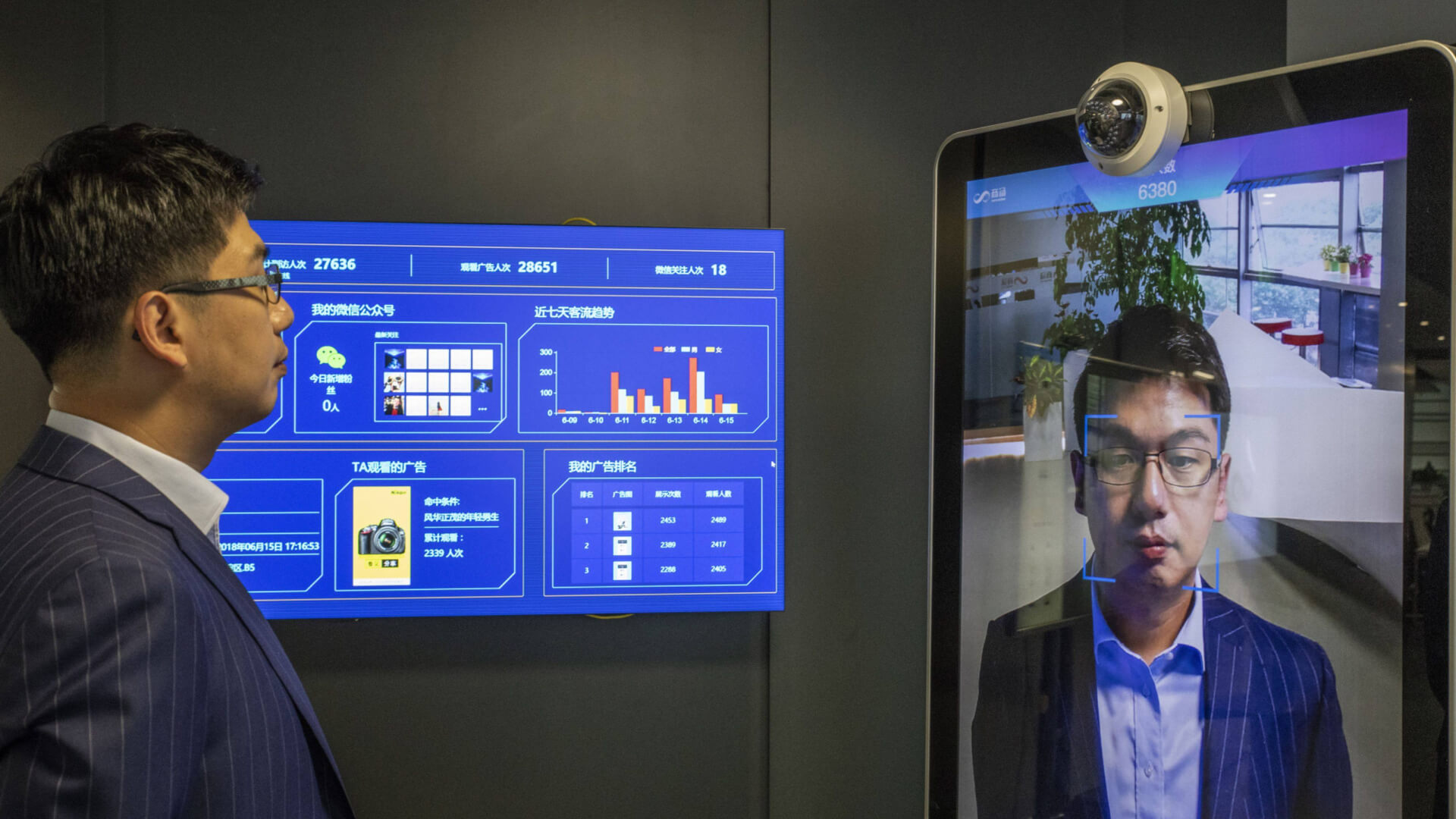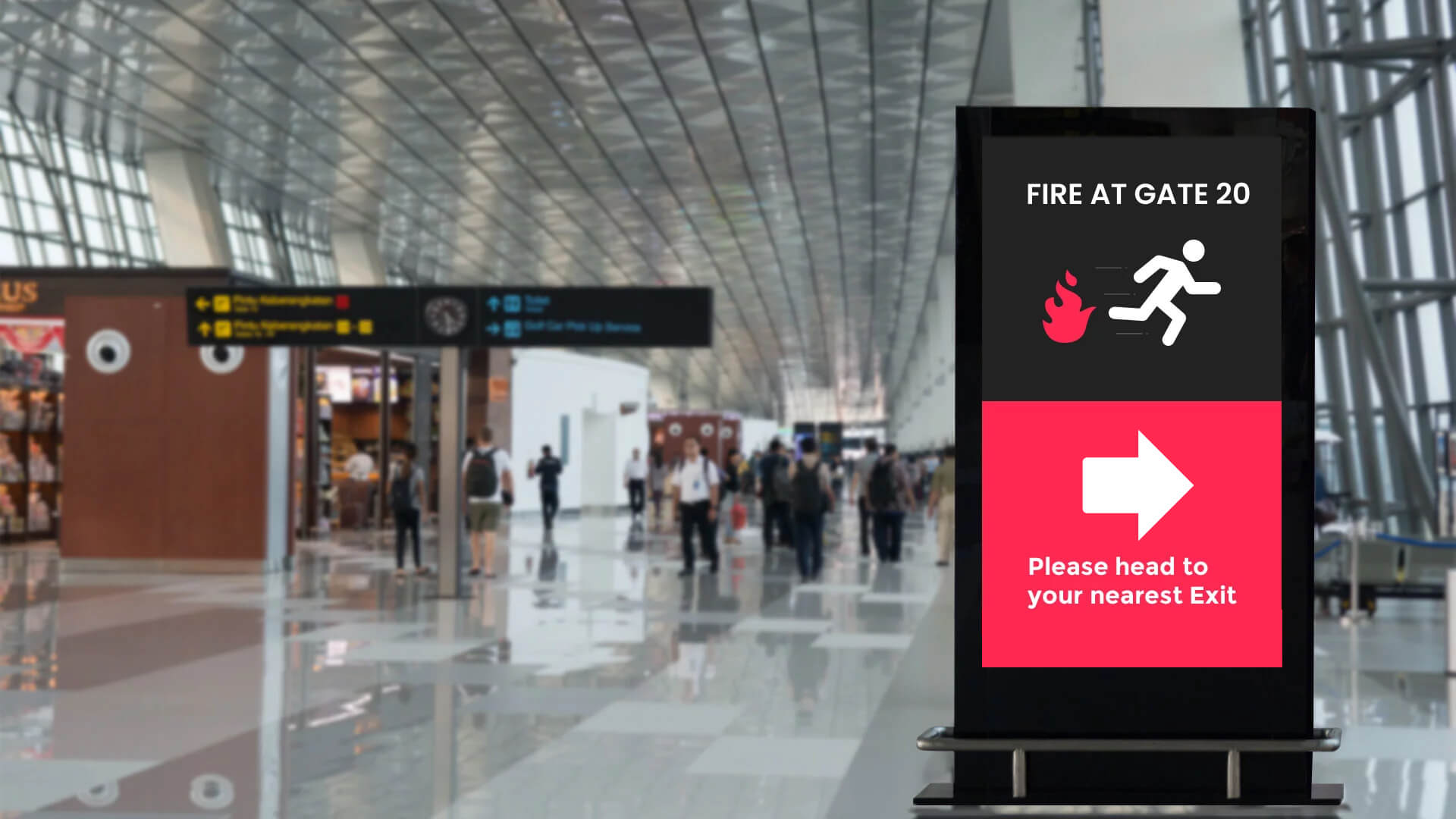
Dec 21 2023
8 min read


Jul
In a world where screens surround us, from bustling city streets to quiet office corridors, digital signage has evolved into a powerful tool for communication and engagement.
But what if these screens could think, learn, and adapt?
Welcome to the future of AI-powered digital signage, where imagination meets innovation. These aren’t just signs; they’re dynamic storytellers, personalized guides, and data-driven strategists. By harnessing the potential of AI-based digital signage, businesses can revolutionize how they engage with their audiences through personalized and interactive experiences.
In this blog, we will explore 15 mind-blowing possibilities that transform static displays into intelligent units, going far beyond the ordinary.
Let’s look at the 15 most incredible use cases of AI powering digital signage screens across industries.

AI-powered digital signage systems utilize computer vision algorithms to analyze audience demographics, behavior, and engagement. For instance, a retail store can use facial recognition technology to determine the age and gender of customers, helping tailor promotional content to specific demographics.
Furthermore, by analyzing dwell times and engagement levels, businesses can gauge the effectiveness of their displays and optimize content accordingly
Digital signage based on AI uses real time data to modify content. Say an airport digital display that detects flight delays and automatically updates departure times. By leveraging machine learning algorithms, businesses can ensure that the information displayed remains accurate and relevant, providing travelers with a seamless and up-to-date experience.
Try For FreeDigital signage incorporating AI technology can deliver personalized experiences to individuals. For example, a hotel lobby display can analyze guest preferences through loyalty programs and display tailored recommendations for dining or local attractions. By incorporating contextual data, such as weather or time of day, businesses can create meaningful interactions that cater to each viewer’s interests and needs.
According to a report published by Adobe, personalized content significantly impacts buying decisions. Adobe’s U.S. consumer survey revealed that consumers are almost 51% more likely to complete a purchase when they encounter personalized content.
AI can also analyze social media trends and individual user data (where permissions are granted) to tailor digital signage content. For instance, if a user has shown interest in certain products or events on social media platforms, the digital signage in a retail store or event venue can display related advertisements or information when it recognizes that individual.
AI enhances advertising efforts by leveraging data analytics and machine learning. Digital signage can analyze customer behavior patterns and preferences to deliver targeted advertisements.
In the hospitality industry, AI-driven digital signage can transform advertising by providing personalized experiences. For example, a hotel chain can use AI to analyze guest data from loyalty programs and booking histories. When a frequent business traveler checks in, the digital signage in the lobby can display advertisements for local business services, meeting room availability, and dining options tailored to the guest’s preferences. This targeted approach not only enhances the guest experience but also drives higher engagement with the hotel’s services and amenities.
In February 2023, Bain & Company, a leading management consulting firm, formed a worldwide service partnership with OpenAI, aiming to incorporate AI into their internal processes . Following this announcement, Coca-Cola became the inaugural corporation to engage in this collaboration.
To initiate this partnership, Coca-Cola introduced a competition named “Create Real Magic.” This contest encouraged participants to use ChatGPT and DALL-E, along with classic Coca-Cola advertising materials, to craft innovative art pieces. These creations were then showcased on the company’s website. It is already happening. AI will become a staple in the advertising industry.

Integrating AI into digital signage enables interactive experiences, transforming how users engage with content. For instance, in a museum setting, visitors can use gesture recognition to interact with artifacts or explore additional multimedia content. A prime example is the “A Gesture Recognition Framework for Exploring Museum Exhibitions” system developed by Vincenzo Agate and Salvatore Gaglio, which allows visitors to interact with virtual objects and navigate digital environments.
Integrating advanced gesture recognition that can interpret a wider range of movements, along with voice recognition could cater to accessibility needs and provide an alternative for users to interact with the signage. By leveraging AI to understand and respond to verbal commands, digital signage can become more inclusive and convenient for a broader audience.
AI streamlines content creation for digital signage by automating tasks such as generating visuals, videos, and text. For instance, a restaurant can utilize AI-based digital signage software to generate visually appealing menu boards that align with its brand identity in real-time. By saving time and resources, businesses can focus on delivering captivating content that resonates with their target audience.
AI algorithms empower digital signage to make accurate predictions by analyzing historical and real-time data. A movie theatre can utilize digital signage analytics to anticipate moviegoers’ preferences and optimize content recommendations, improving customer satisfaction and driving ticket sales. Similarly, a quick-service restaurant can analyze past order patterns and current weather conditions to forecast popular menu items, adjusting promotions and inventory accordingly. By staying ahead of trends, businesses can make data-driven decisions that enhance customer experiences and boost ROI.
Digital signage offers intelligent wayfinding solutions in complex environments like shopping malls or airports. By integrating with mapping data and real-time updates, digital signage can provide optimized routes, display relevant points of interest, and even adapt to changing conditions.
For example, an interactive digital signage kiosk can use AI to guide visitors through a museum, highlighting popular exhibits and adjusting routes to avoid crowded areas.
AI algorithms enable digital signage to gauge audience reactions and emotions by analyzing facial expressions and gestures. A concert venue can assess the crowd’s energy levels through emotion detection via face-cams on electronic signage screens and dynamically adjust the displayed content and lighting effects to create a more immersive experience. By understanding emotional responses, businesses can tailor their strategies and content to elicit desired reactions from their audience.

AI digital signage can dynamically adjust pricing based on inventory levels and market trends. Consider a grocery store that updates product prices on digital displays to reflect real-time stock availability or promotional discounts or puts out flash discounts for end-of-the-day stock clearance. Businesses can maximize revenue and customer satisfaction while efficiently managing inventory by optimizing pricing strategies.
AI-based digital signage effectively manages queues and waiting times in various settings. For instance, a hospital can utilize electronic displays to provide estimated wait times, notify patients about their turn, and direct them to available services or alternative options. By leveraging real-time signage analytics and stats, businesses can streamline operations, reduce customer frustration, and enhance overall satisfaction.
AI-powered digital signage can integrate with social media platforms to display real-time user-generated content and foster community engagement.
A coffee shop can showcase customers’ posts by creating a social wall and sharing their experiences with a branded hashtag. By leveraging social proof and encouraging user participation, businesses can strengthen their online presence and build a loyal customer base.

AI algorithms enable digital signage systems to analyze video feeds and detect potential security threats or safety hazards. An AI-powered surveillance system in a shopping center can detect suspicious behavior and promptly alert security personnel by displaying real-time alerts on all signage screens across the building. These can help prevent unauthorized access or compromise visitors’ safety they have a smooth purchasing experience.
AI-powered digital signage is a treasure trove of valuable data that holds the key to actionable insights. Let’s take the example of a bustling transportation hub. By analyzing real-time engagement metrics, such as viewer interactions and response rates, businesses can gauge the effectiveness of the displayed content. This helps identify improvement areas and the kind of content the audience enjoys, allowing them to refine their strategies and optimize their campaigns.
AI is the brain behind digital signage, continuously learning and adapting to improve over time. By collecting and analyzing data, intelligent algorithms optimize content delivery, refine targeting strategies, and enhance overall performance.
For instance, a retail store can use AI-powered signage to test different visual elements, measure customer response, and refine the content to create personalized and engaging experiences. With AI as their secret weapon, businesses can captivate their audience, drive higher engagement, and enjoy increased conversions by delivering unforgettable experiences that keep customers coming back for more.
AI-powered digital signage empowers businesses to engage with their audiences by providing personalized and interactive experiences. The use cases discussed in this blog demonstrate how AI combines with digital signage to deliver exceptional customer experiences, enhanced interactivity, and improved ROI. With more and more automation set to take the stage, it’s time to leverage technology to bring out the best of what you offer.
Take complete control of what you show on your digital signage & how you show it.
Start Free Trial Schedule My Demo
Dec 21 2023
8 min read

Dec 19 2023
6 min read

Dec 14 2023
7 min read

Dec 8 2023
8 min read